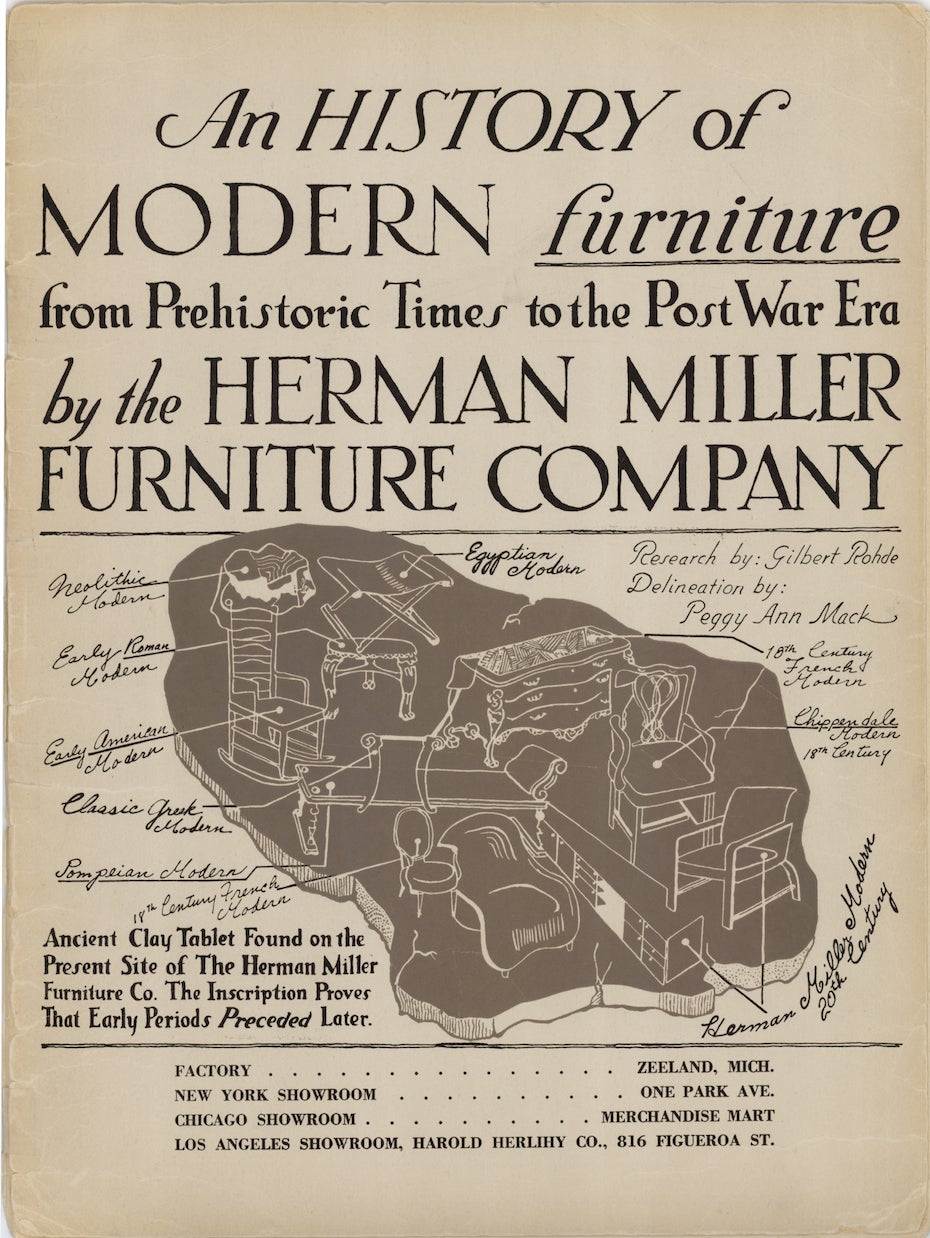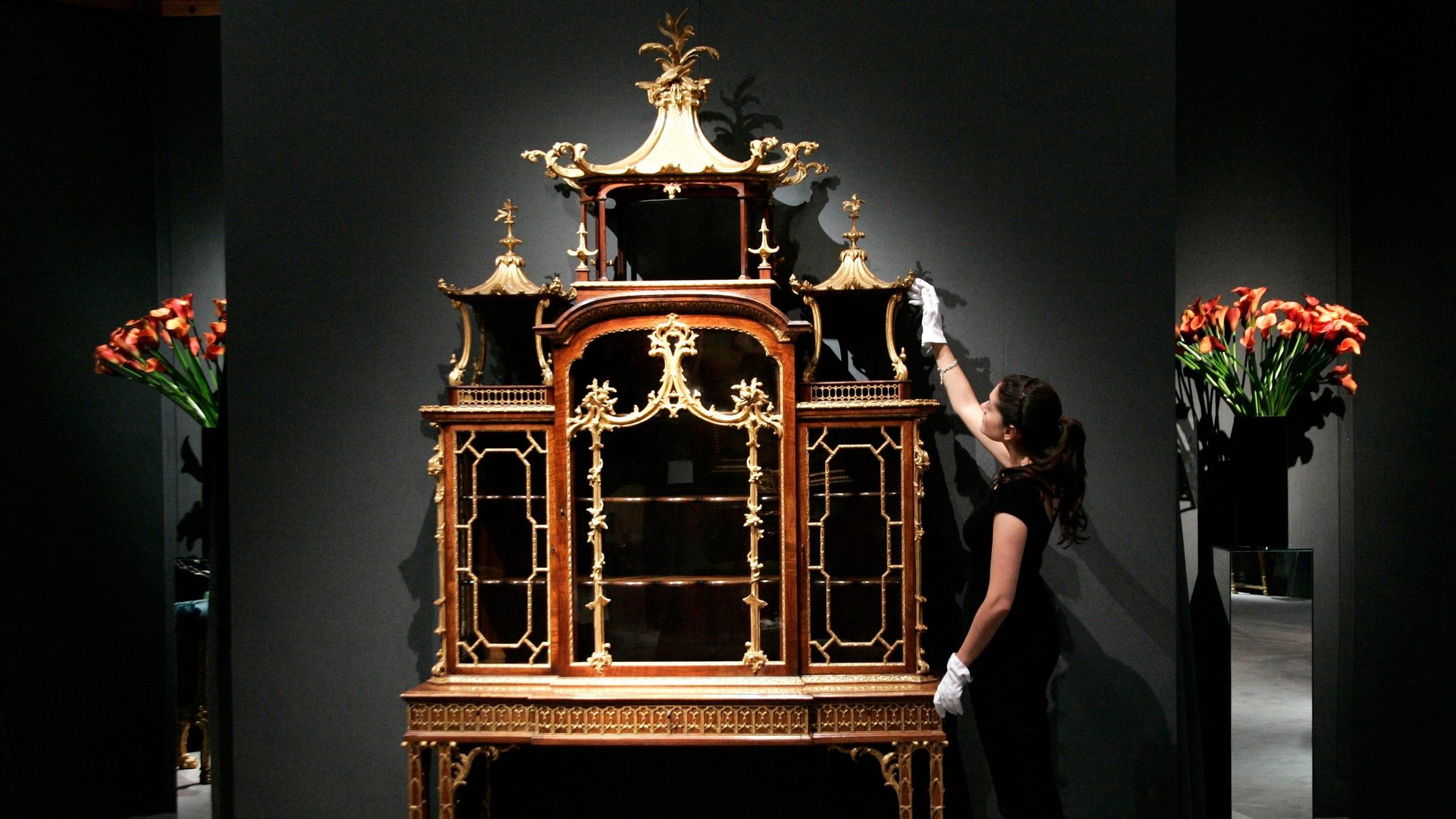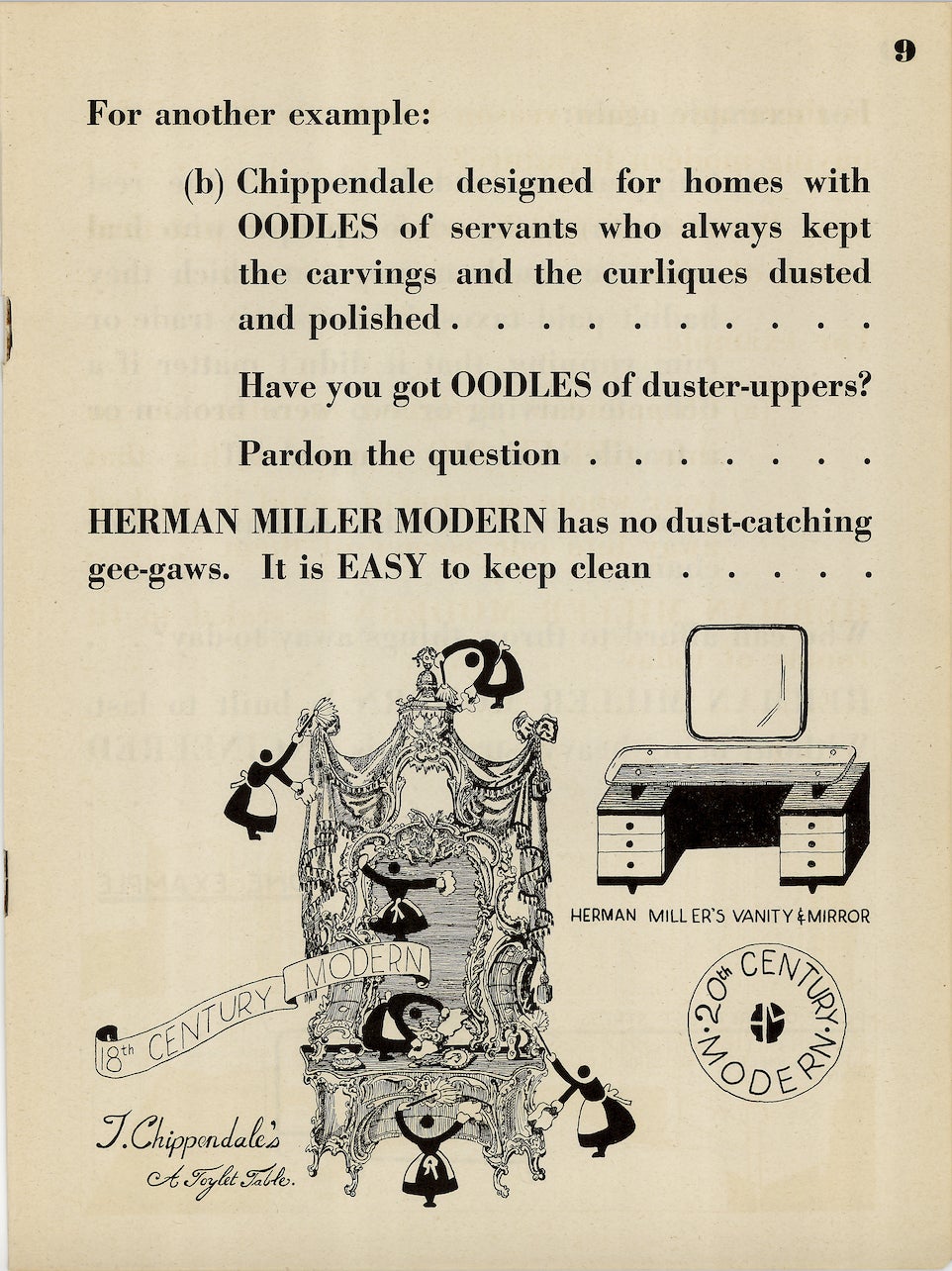Modern furniture was once sold as an alternative to hours of tedious dusting
Judging from the slick catalogues and glossy magazine spreads today, it’s easy to forget that modern furniture was once marketed as a time-saving solution to relieve women from hours of housework.


Judging from the slick catalogues and glossy magazine spreads today, it’s easy to forget that modern furniture was once marketed as a time-saving solution to relieve women from hours of housework.
A Herman Miller’s 1940’s promotional booklet titled “An (sic) History of Modern Furniture from Prehistoric Times to the Post War Era,” gives the straight talk about the advantage of modern furniture over antique Chippendale-style pieces that were coveted during that time.

Written by the company’s first design director Gilbert Rohde and illustrated and designed by his wife Peggy Ann, it appeals to women who made buying decisions for households:
Chippendale designed homes with OODLES of servants who kept the carvings and curlicues dusted and polished.
Have you OODLES of dust-uppers?
Pardon the question.
Herman Miller Modern has no dust-catching gee-gaws. It is EASY to keep clean.
The “gee-gaws” Rohde refers to are the finely detailed wood carvings, curving cabriole legs, and ball-and-claw feet that’s come to be associated with the English cabinetmaker Thomas Chippendale. The ornate style dominated American furniture manufacturing until around 1770’s, and Chippendale antiques were highly prized and collected.

In the 16-page book, the Rohdes argued for the practicality of modern furniture. In contrast to previous styles, modern pieces were scaled to fit smaller apartments, were sturdy, customizable, and best of all had smooth, practical surfaces that can be dusted with ease. As with many things, it’s all about maintenance.

With startling polemic, Rohde writes:
Chippendale (and Boule and the rest of them) designed for people who had made so much money (on which they hadn’t paid taxes) in the slave trade or rum running, that it didn’t matter if a delicate carving or two were broken or a fragile chair leg snapped off. It was simple to buy another chair.
Who can afford to throw things away to-day?
Produced in 1942 during World War II, the Rohdes were appealing to time-poor American women who had to juggle professional careers while managing their households. During the war, women for the first time, were employed in professions typically assigned to male workers—now at war—which took wives away from their homes for the entire workday. The 1940’s marked the decline of employing live-in domestic helpers in middle class homes. Finding childcare, let alone household cleaning, was—and remains—an ever present challenge for multi-tasking workers. Modern furniture, in the Rohdes’ words and images, was one weapon against the ceaseless battle with dust.
Of course even the most innovative furniture design couldn’t eliminate furniture-related chores. A 2015 US Bureau of Labor study reveals that women in the US spend an average of 29 minutes each day cleaning the homes. It’s the second most time-consuming household task after food preparation.
Update: A previous version referred to Peggy Ann Rohde as the writer of the catalogue.